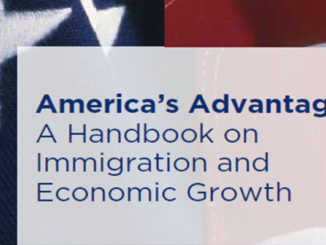
Last year we published a blog summarizing the research on how immigrants affect the crime rate in the United States. There are two major types of studies that examine this question.
The first uses Census data of the institutionalized population to investigate immigrant versus native incarceration rates. Although the Census evidence isn’t perfect because of potential issues with reporting immigration status and different types of incarceration, these studies show that immigrants are less likely to be incarcerated than similarly-aged natives. The second type is a macro-level or area study that looks at the crime rates in places that have experienced large waves of immigration. These generally find that immigration either lowers or has little effect on crime rates. The research on unauthorized immigrant crime rates is poor.
A few recent papers recently extended these findings. The first by David Green seeks to determine whether immigrants affect violent and drug-related crime in the United States on the state-level. It looks at state-level rates of violent crime and drug arrests pooled for the 2012-2014 years against pooled statistics on foreign-born and Mexican nationals by immigration status, specifically legal versus unauthorized immigrants. Green finds no association between immigrant population size and increased violent crime. However, he does find a small but statistically significant association between unauthorized immigrant population size and arrests for drug offenses.
The second by criminologists Biana Bersani and Alex Piquero investigated whether immigrants are less crime-prone than natives because immigrants are less likely to report crimes. If it was true that immigrants were less likely to report crimes and most of the victims of immigrant-crime were other immigrants, then the real immigrant crime rate could be much higher than the data is revealing due to a lack of reporting. This would also increase their relative crime rates compared to second-generation and other U.S.-born Americans who are more likely to report crimes.
On its surface, this theory has some appeal because immigrants are generally weary of dealing with government authorities that subjected them to this bureaucratic monstrosity – especially if they are unauthorized. Bersani and Piquero analyzed data from a 7-year longitudinal study called Pathways to Desistance that logged the respondents’ immigration status, age, self-reported criminal and arrest records, and official criminal and arrest histories. They found no systematic difference between the self-reported and official criminal and arrest histories of the respondents by immigrant generation. Although not conclusive, this should strongly bias us against the notion that the low-levels of reported immigrant criminality are not based on reporting differences. The evidence of low immigrant criminality continues to grow.
Alex Nowrasteh is the immigration policy analyst at the Cato Institute’s Center for Global Liberty and Prosperity.




Putting the blame on immigrants for having an increase crime rates in the US is very superficial. Not everyone entering in the US can be considered a criminal or so just because he is not a born American. I’d say that more immigrants are even more concern with the status of the country than the one’s who are born in the country.